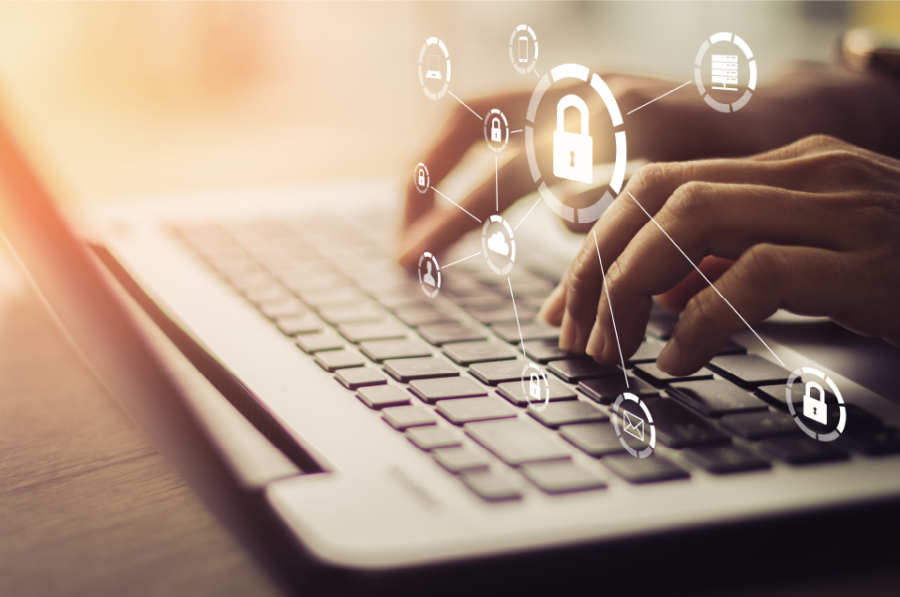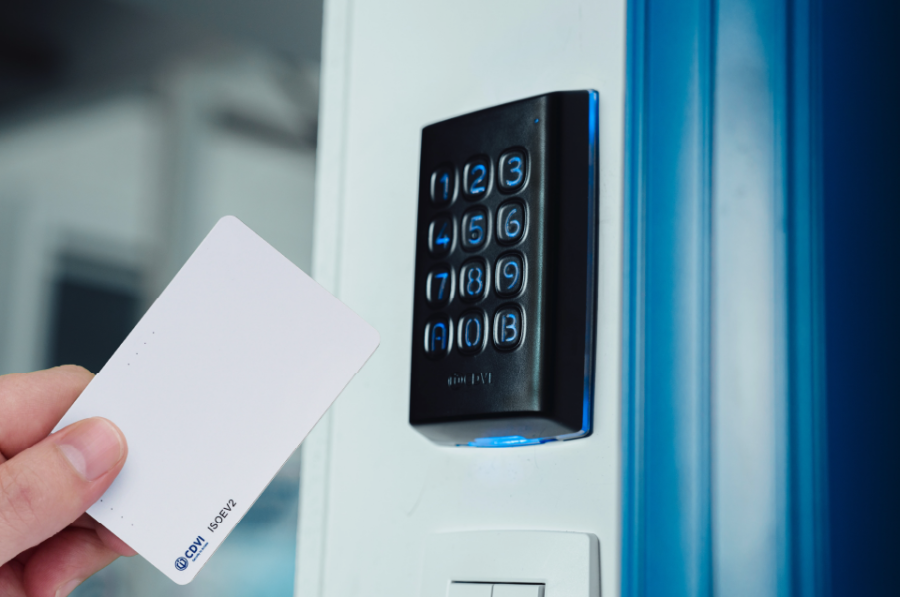What is access control?
Access control is about controlling, limiting, or restricting the people who can enter a certain area. The areas being secured can be physical or virtual environments. In the physical sense, you are ensuring that only authorised individuals can gain access to a particular door, room, floor, area, carpark, or other physical space. Conversely, virtual access control restricts people’s access to particular computer files, networks, or databases.
Have you ever:
- scanned a card to unlock an office door?
- used a fingerprint scanner to pass through turnstiles at the entrance of a gym?
- used a password to sign into a WiFi network?
These are all common methods of access control.
Why is access control important?
Knowing who can access a physical or virtual space is essential for day-to-day operations in many parts of our lives. Even in our own homes, we use a basic form of access control (by only giving keys to trusted people) to ensure that not just anybody can walk into the house. This type of trust-based system is called Discretionary Access Control. For businesses, the requirement is usually more complex, and systems consist of electronic devices and databases of users to keep track of who is allowed where.
Keeping people and assets safe
Access control is fundamentally about security. We want to keep people and our property safe and secure, and in order to do that, we need a way of knowing exactly who is allowed in. Businesses have physical assets, valuable data, and of course staff to protect. If we didn’t have a method of restricting who can enter the stockroom, download important files, and unlock the front door of the business premises, it simply wouldn’t be possible to run a business effectively.
Components of an access control system
There are a huge range of types and methods of access control, all with their own advantages and disadvantages making them more or less suited to certain contexts. However, all access control systems can be broken down to three fundamental parts:
- The lock
- The credential
- The reader
About locks for access control
The lock is the thing that secures a barrier to stop just anybody getting in. This could be a traditional barrel lock on your house’s front door, an electro-magnetic lock between two sliding gates, a paywall for an online newspaper, a turnstile, or any other kind of secured barrier.
Types of credentials for access control
The credential is the thing that validates your permission to enter and ultimately grants you access. There are dozens of different types of credentials, all best suited for use in different circumstances. However, there are three basic categories: something you know, something you have, or something you are. Some examples of credentials include:
- Something you know – The password you use to unlock your phone. The PIN you enter into a keypad at the front of an apartment building.
- Something you have – The key you use to unlock your home’s front door. The card you scan to enter your workplace. The number plate on your car that allows you entry into a private car park. The passport you present to allow you into another country.
- Something you are – Your fingerprint when you use it to unlock your phone, tablet, or laptop. Your voice when you ask Alexa or Siri to skip this song.

What is an access control reader?
The reader is the thing that validates your credential. The pins inside a barrel lock determine whether the key is the right one to open the door. An electronic card reader receives a signal from the card credential and compares it to a database of users. If the database returns data that says that card credential is valid, the door is opened. When you use Face ID to unlock an iPhone, the phone camera becomes the reader as it analyses your face and then determines whether you are a valid user.
Why access control is important for businesses
For businesses, access control is about keeping people, assets, and data safe. It’s about knowing who is where and when, and stopping unauthorised people from being in places that they should not be.
Whether your business is a small local florist, a growing tech start-up, or a multi-national corporation, it’s built on a level of trust in individual people. When you decide to hire someone into your business, it’s with the understanding that they are now trusted to join your circle, work with your tools, data, and stock, and share in physical and virtual environments with the rest of your team. Access control is a way of managing and leveraging that trust.
 How businesses benefit from access control
How businesses benefit from access control
Hand-in-hand with a business based on trust comes confidence. If your access control systems are versatile, reliable, and robust, then everyone in the business can be confident in its security.
On-site staff can be confident that only authorised team members are inside the building. Remote teams can be confident that data shared on online systems won’t be intercepted. Senior management can be confident that the movement of people into and around a site is efficient and accurately tracked. Customers can be confident that they are dealing with a professional organisation that cares about the integrity of its buildings and systems.
What is good access control for businesses?
A good physical access control system in a standard security environment (like a commercial office) is convenient for users, quick to respond in the event of a breach, and simple for administrators. The benefits of such a system are often varied, and not always appreciated.
- More efficient buildings. Getting authorised people in and around buildings with minimal hassle makes the work day better for everyone.
- Happier staff. Systems should be easy to use, shouldn’t require users to remember 2 different cards and 3 different PIN codes, and should provide a safer work environment. It’s those small day-to-day improvements that contribute to an overall better work experience.
- Better reporting. For senior managers, quick and easy identification of individuals trying to gain access to unauthorised areas, people who are consistently late, or other issues makes disciplinary conversations a lot easier. Accurate reporting also means you can get a better, fuller picture of your business as a whole, allowing you to make informed decisions for the future.
Access control that suits your business is essential not only for day-to-day administration and operation but also for tacit factors like employee satisfaction and business adaptability. Whether your business’ needs are large or small, simple or complex, the choice you make will have a significant impact.